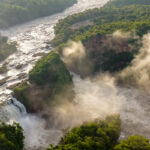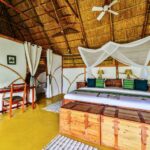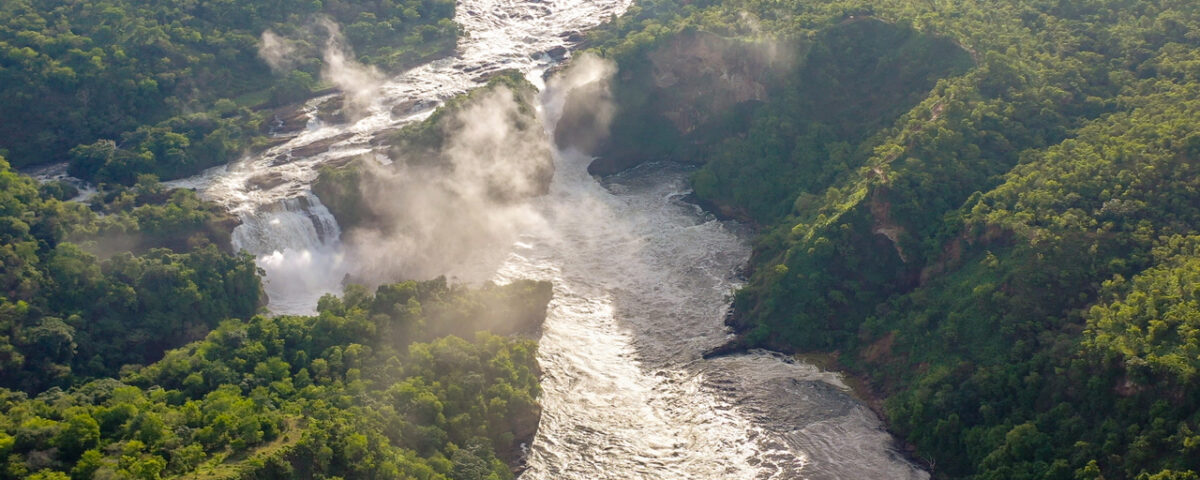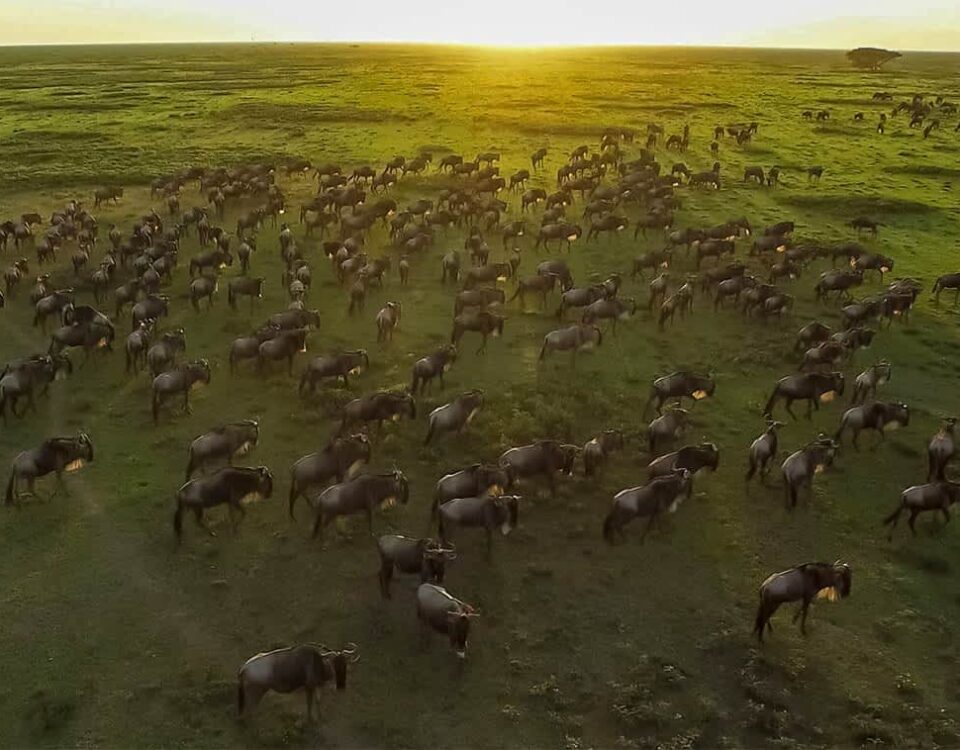
Is It Better to Stay on the Northern or Southern Bank?
May 18, 2025
What Are the Best Lodges in Murchison Falls National Park?
May 18, 2025Is It Too Hot to Visit Murchison Falls in June or July?
When planning a wildlife safari in East Africa, particularly a Murchison Falls Tour, one of the most crucial considerations is the climate. Many travelers often ask, “Is it too hot to visit Murchison Falls in June or July?” Understanding the weather patterns during these months is essential to maximize your enjoyment of the spectacular wildlife, breathtaking landscapes, and rich cultural experiences that Uganda offers. Murchison Falls National Park, the largest in Uganda, is famous for its powerful waterfall, abundant wildlife, and the dramatic scenery along the Victoria Nile. June and July fall within the dry season in Uganda, which typically offers excellent conditions for wildlife viewing and outdoor activities. However, it is also important to know the temperatures and how the heat might affect your Murchison Falls Safari and other Uganda wildlife safaris.
The dry season is renowned for big game drives as animals congregate near water sources, making it one of the best times to spot the Big Five Safari species—lion, elephant, buffalo, leopard, and rhinoceros. The combination of pleasant weather and abundant wildlife viewing opportunities makes June and July a favored period for Uganda safaris. Moreover, the reduced rainfall means easier access to some remote parts of the park, enhancing your chances for a more immersive and memorable wildlife safari experience. This writeup by Renai Safaris delves deeper into the climate realities of visiting Murchison Falls during these months, helping you prepare better and tailor your adventure accordingly.
The Climate of Murchison Falls in June and July: Dry Season with Moderate Heat
Dry Season Dynamics and Safari Comfort
The question, “Is it too hot to visit Murchison Falls in June or July?” largely depends on one’s perspective and expectations of heat. June and July mark the heart of the dry season in Uganda, including Murchison Falls National Park, where rainfall is minimal to none, and the weather is relatively stable. Temperatures during these months typically range between 20°C (68°F) during the cooler mornings and evenings and can peak up to around 30°C (86°F) during the day. For many safari enthusiasts, this is considered pleasantly warm rather than overwhelmingly hot, especially when compared to tropical climates elsewhere.
The dry weather conditions facilitate excellent wildlife safaris because animals tend to gather around the remaining water sources, making game drives more rewarding. This period is ideal for spotting lions lounging in the shade, elephants bathing in the Nile, and large herds of buffalo and antelope near the riverbanks. The relative dryness also ensures that the dirt roads and trails remain navigable for safari vehicles, allowing for smoother exploration of the park’s diverse ecosystems.
For those concerned about heat, early morning and late afternoon safaris are recommended to avoid the mid-day sun. Additionally, staying hydrated and dressing in lightweight, breathable clothing enhances comfort during Murchison Falls tours. With proper planning, visitors can enjoy both the vibrant wildlife spectacle and the stunning scenery of the falls without being hindered by the warmth.
Wildlife Viewing Opportunities and The Big Five Safari Experience
Optimal Game Drives During June and July in Murchison Falls National Park
June and July are often regarded as prime months for big game drives and wildlife viewing in Murchison Falls. The dry season reduces the thick vegetation, improving visibility and making wildlife easier to spot. This is particularly advantageous for spotting the Big Five Safari animals, which are among the most sought-after species on any Uganda wildlife tour. The park is home to lions, elephants, buffalo, leopards, and although rhinos are not present in Murchison Falls, it offers a fantastic substitute with its diverse wildlife including hippos, crocodiles, and various antelope species.
The concentrated waterholes and the Victoria Nile create a natural wildlife magnet. Hippos and crocodiles bask in the river, while elephants and buffaloes drink at the water’s edge. Birdwatchers can also revel in the spectacular array of birds, such as the African fish eagle perched near the falls, one of the iconic sights of the park. The unique spectacle of animals congregating at watering points during the dry season is a highlight that defines the Murchison Falls Safari experience.
For visitors embarking on a wildlife safari in June or July, the conditions favor exciting game drives combined with boat cruises along the Nile. The boat cruise under the Murchison Falls reveals a panorama of wildlife along the banks and is an unforgettable aspect of the tour. With fewer mosquitoes due to the dry conditions, evenings become more pleasant, allowing guests to enjoy campfires and lodge comforts after a day of thrilling wildlife encounters.
Chimpanzee Tracking and Cultural Safaris in Uganda: A Perfect Addition to Your Murchison Falls Tour
Beyond Big Game: Primate Experiences and Cultural Immersion
While Murchison Falls Safaris focus heavily on game drives and spectacular falls, the broader Uganda safari experience offers more than just the Big Five and river cruises. Visitors in June and July can extend their adventure with chimpanzee tracking in nearby forests such as Budongo or Kibale National Park, renowned for hosting habituated chimpanzee communities. Chimpanzee tracking is a thrilling activity for wildlife lovers wanting to observe these intelligent primates in their natural habitat, a highlight of many Uganda wildlife safaris.
Moreover, a truly enriching Uganda safari includes engaging in cultural safaris in Uganda that allow visitors to interact with local communities. During your trip to Murchison Falls, you can visit traditional villages where the Acholi and Langi people showcase their vibrant customs, dances, crafts, and daily life. This cultural immersion provides a deeper appreciation of the country’s heritage and the symbiotic relationship between local people and wildlife conservation efforts. You might witness traditional ceremonies, sample local cuisine, or participate in storytelling sessions that bring Uganda’s rich culture alive.
By combining the natural wonders of the Murchison Falls wildlife tour with intimate cultural experiences, travelers gain a well-rounded understanding of Uganda’s uniqueness. This dual experience enhances the safari’s meaning beyond wildlife observation, connecting visitors to the heart and soul of Uganda.
Preparing for Your Uganda Safari in June and July: Tips for Comfort and Success
How to Make the Most of Your Murchison Falls Tour During the Dry Season
In answer to the question “Is it too hot to visit Murchison Falls in June or July?” the climate is warm but manageable, and with proper preparation, you can ensure an enjoyable and comfortable Uganda safari. To fully benefit from your safari adventure during these months, packing the right gear and planning your daily activities around temperature patterns is crucial.
Lightweight, moisture-wicking clothing in neutral colors is ideal for game drives to avoid attracting insects and to stay cool. A wide-brimmed hat and high-SPF sunscreen protect against the sun’s intensity during the day. Early morning and late afternoon game drives are optimal for both temperature comfort and wildlife activity since many animals are more active during these cooler periods. Midday can be reserved for relaxing at your lodge or engaging in cultural visits, when the heat is at its peak.
Hydration is vital, especially during dry conditions when the air can be surprisingly dehydrating. Carrying a refillable water bottle and drinking plenty of fluids helps maintain energy levels. Additionally, while mosquitoes are fewer during the dry season, carrying insect repellent is still advisable, especially if you plan boat cruises or forest walks.
Renai Safaris recommends booking with experienced local guides who understand the terrain, wildlife behavior, and seasonal patterns to tailor your Murchison Falls safaris for maximum comfort and wildlife viewing success. By following these tips, visitors can fully enjoy the breathtaking beauty of Murchison Falls and its surroundings during June and July without undue discomfort from the heat.
Conclusion: Is It Too Hot to Visit Murchison Falls in June or July?
After exploring the climate, wildlife opportunities, cultural experiences, and preparation tips, the answer to whether it is too hot to visit Murchison Falls in June or July is a resounding no. The dry season offers some of the best conditions for a wildlife safari and Uganda wildlife tour, with moderate temperatures, excellent game viewing, and fewer insects. June and July provide perfect weather for embarking on big game drives, experiencing the power of the falls, and engaging in chimpanzee tracking and cultural safaris that enrich the overall journey.
Choosing this period for your Murchison Falls Tour means enjoying the harmonious blend of nature’s raw beauty and Uganda’s warm hospitality in a climate that enhances your experience rather than detracts from it. With Renai Safaris as your guide, your adventure will be well planned to ensure you stay comfortable, safe, and fully immersed in the wonders of Uganda’s premier national park and beyond.
If you are planning a Murchison Falls Safari or a broader Uganda safari in June or July, understanding the climate and how to prepare can transform your trip from good to extraordinary. From thrilling game drives and exhilarating boat cruises to cultural connections and chimpanzee tracking, this time of year invites travelers to witness Uganda’s rich wildlife and culture in the best light.


